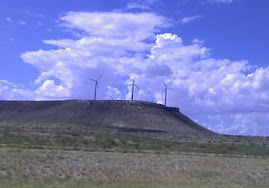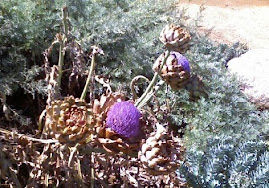HURRICANES AND WEATHER
Dr. William Gray/Dr. Philip Klotzbach have issued their June update to the 2009 hurricane season forecast. For the report, see the AND MORE section.
Meanwhile, the National Hurricane Center is noting that the area of low pressure in the northeast Atlantic has had some tropical thunderstorms close to the center. However, the water is quite chilly and going to get chillier as the storm continues to move. Interestingly, some models track it toward Portugal/Spain or possibly France. So, I'll watch that and keep you posted. Hurricane Center is calling this Invest92L.
Very hot and steamy across the southeast US on Wednesday with highs in the 80s and 90s. Over the century mark in Phoenix. 50s, 60s, 70s for highs across most of the northern tier of states, northern New England and western California. 80s for highs in the interior west. Pleasant in the midwest with highs in the 60s and 70s and lower humidity. Thunderstorms from Texas to the eastern seaboard and through Florida. Also some storms over the Intermountain Region.
Houston, there were some coastal thunderstorms this afternoon. I think there will be some big gully washers on Wednesday...especially late afternoon, early evening. So keep that in mind for the evening commute. When it rains in Houston, it can really, really, really pour!!! But, after another stifling day, Thursday and Friday will be noticeably less humid and cooler in the mornings...still hot in the afternoons. Weekend will be hot and humid and that heat and humidity will continue into the coming week.
SPANISH WORD OF THE DAY
Let's do scientist or científico, pronounced see-ehn-TEE-fee-coh. Find out the hurricane forecasts from some of the most well known atmospheric científicos in the AND MORE section.
Scientist and researchers have studied the effects of language and music learning and the results are astounding. Children reap tremendous rewards from both including enhanced neurological development. Introduce your child to the world of language. Order our award winning Let's Learn Frank & Paco, Volume 1 from www.frankandpaco.com/. You can also order from http://www.venturaes.com/, http://www.dololanguages.com/, http://www.carlexonline.com,www.thecuriousmindstore.com/, http://www.amazon.com/,http://www.bestbuy.com/, and http://www.barnesandnoble.com/. For our English as a Second Language (ESL) version, got to http://www.frankypaco.com/.
AND MORE
Speaking of hurricane season and The National Hurricane Center, I saw my good buddy and director of the hurricane center, Bill Read, at the event. Bill certainly got the initiation by fire with last year's hurricane season (being his first at the helm). Ike is now being called the 3rd most costly storm on record (after 2005's Katrina and 1992's Andrew). You'll be happy to know that Bill was vigorous, clear-eyed and ready to take on the upcoming season. We've got a steady, capable man at the helm. And, his successor to leading the Houston/Galveston National Weather Service office is another dear friend, Gene Hafele, a very smart and hard working man. Gene was Bill's head warning meteorologist when Bill was the head of the local NWS office. Gene did a great job of guiding us through Ike in 2008. I feel very good about and grateful for these weather leaders.
By the way, Katrina officially made landfall as a high end Category 3 and Andrew was reclassified about a decade after it hit as one of the 3 known Category 5's to hit the US. But back to Ike...it was also a very large storm...second only to Carla (the famous Category 4 storm--the center of which hit Port O'Connor in 1961 but brought the highest tides measured thus far to Galveston Bay). And it was larger than Katrina...and Katrina was a very big storm. There are many factors to consider about hurricanes. In fact, the size, wind speed, forward speed, angle of impact, location of impact, and timing of impact all affect the size of the storm surge. I mention timing, because timing of high tide matters too. If the surge arrives with high tide, then the water level will be even higher.
When talking about the forecast from Dr. William Gray, I am going to include Dr. Phil Klotzback, because he is now a big part of that forecast. Dr. Gray is trying hard to retire, but it is hard to give him up. In any event, their forecast comes to you from Colorado State University and they have lowered the number of storms expected in the Atlantic basin to 11 named storms, 5 of those hurricanes and 2 of those major hurricanes. The average (1950 to 2000) is 10, 6 and 2 respectively. Keep in mind, that average is higher if you take into account the period from 1994 to present. They lowered the number because of the unusually cool waters in the Atlantic and the possibility that we are transitioning to an El Nino pattern (which could be in place by the height of the upcoming hurricane season). As you may recall during El Nino years, there is more wind shear (which inhibits development and destroys storms). For the US coast from Florida to Brownsville, TX, they are forecasting a 28% chance for a major hurricane strike (the average is 30%). Here is the link to their site.
http://tropical.atmos.colostate.edu/forecasts/
NOAA is predicting a fairly average season and the local Weather Resarch Center is predicting a below normal season.
Please remember that you should prepare every season regardless of how many storms are predicted. The last officially "major" hurricane to hit the upper Texas coast was Alicia in 1983 (and there were only 4 storms that year).
Have a wonderful Wednesday everyone!
Cecilia Sinclair
Wonder Weather Woman
HONORING RUTH IN HOUSTON!
13 years ago




























.jpg)




.jpg)




.jpg)
.jpg)
.jpg)

















